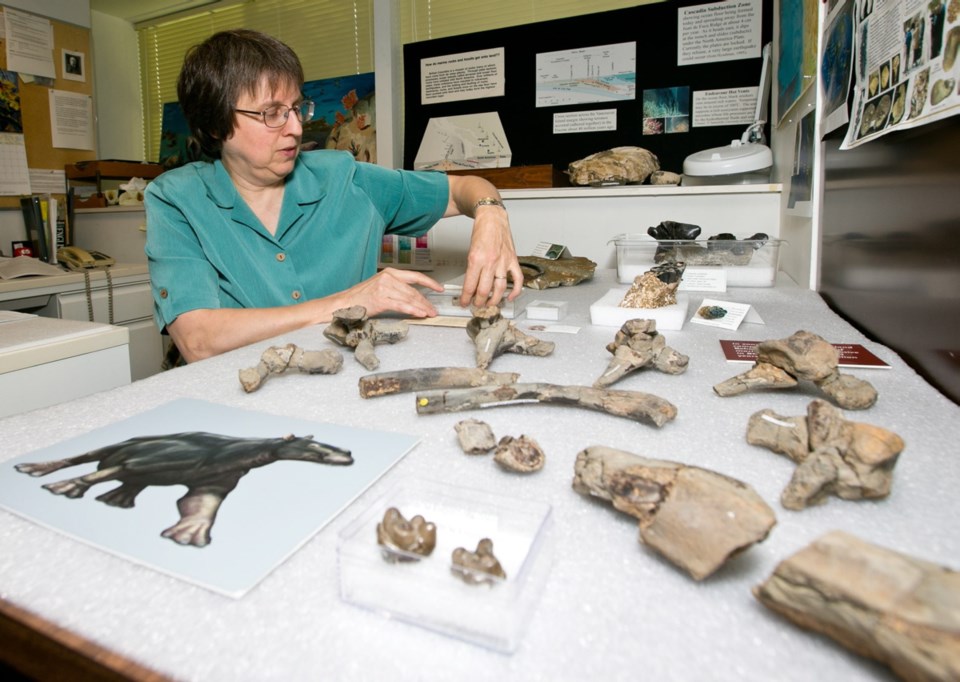National Fossil Day came Wednesday, but for Tom Cockburn it landed about 30 million years ago when a hippo-like behemotops died on what became Sombrio Beach.
The behemotops’ bones became fossilized and, despite millions of years of ground movement, many of its bones remained close enough together to result in a tidy scientific find.
Cockburn said campers at Sombrio Beach found them and turned them into the Royal B.C. Museum, where they were identified, cleaned and catalogued as a specimen in the museum’s paleontology collection.
It was there that Cockburn, as a museum research associate, was able to examine them and co-author a scientific paper based on his examination. “I want to be fair to all the other fossils, but the behemotops is certainly a favourite fossil.” Cockburn, 73, said with a laugh in an interview from his home in Central Saanich.
The behemotops was part of a scientific order of marine mammals called desmostylia, the only such order to become completely extinct. Its fossil range, set down about 20 million to 34 million years ago, has not been discovered outside the north Pacific area.
National Fossil Day was first celebrated in 2011. The creation of the U.S. National Park Service and the American Geo-Science Institute, it’s a day celebrated by museums across North America to honour the study of paleontology.
Marji Johns, curator of paleontology at the Royal B.C. Museum, said she shares Cockburn’s special fondness for the behemotops fossils.
But Johns said the museum collection is interesting and varied enough for volunteers, museum staff and researchers to study an enormous variety of areas. In recent years, the collection has given rise to five published scientific papers.
Johns said the collection is a tribute to British Columbia, which has some of the oldest and most recent fossils in Canada, dating as far back as 500 million years. “We are a very fossiliferous province,” she said.



